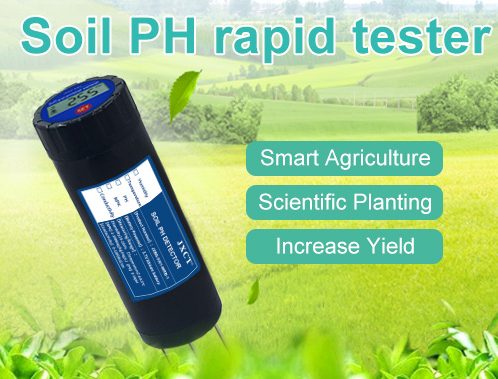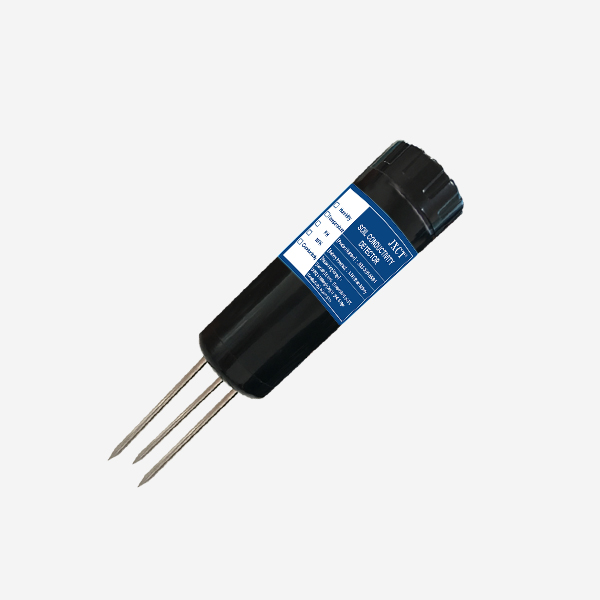Maintaining healthy soil is the key to growing a healthy and productive plant. Soil pH is a vital component of ensuring your soil provides a favourable root medium for the type of plants you grow. This means that measuring soil pH is essential for anyone who’s serious about horticulture, from professional horticulturalists to keen home gardeners.
This article provides some insight into the technology that makes soil pH sensor function and the different methods you can use with a pH meter to test your soil.
About Soil pH
The pH range is a measure of acidity or alkalinity of a substance. pH follows a logarithmic scale from 0 to 14 with 0 being acidic, 7 being neutral and 14 being alkaline.
For most plants, the ideal pH conditions will fall between pH 5.5 and 7.5, but ranges vary between species, so be sure to check the ideal range of the specific plants you wish to grow. See our article The 5 Best Digital Soil pH Testers for the ideal soil pH ranges for some common vegetable, fruit and ornamental plants.
Methods of testing soil pH
In summary, there are two main methods exploited by soil pH testers:
- Direct ground measurement – This is where soil pH is sampled using an electrode that’s placed directly in the ground. This method is terrific for nursery and field testing but care is needed to ensure you don’t damage your tester’s electrode. Where the soil you wish to test is firm to hard, it’s recommended that you first use an auger to disrupt the soil and then dampen the soil using distilled water before taking your measurements.
- Soil slurry or dilution method – This technique is slightly more time consuming but less damaging to the electrode probe.It involves mixing your soil with distilled water in a container before using your pH tester take a measurement.
For a comprehensive, step-by-step explanation of both the sampling procedures mentioned above see our article How to use a soil pH meter.
How a soil pH sensors works
Portable Soil pH testers will have one of two main designs. They will contain an electrode in the body of the device, or the electrode is connect to the body by a wire.

Irrespective of the design, the principle behind the technology is the same. The pH electrode that takes the pH measurement consists internally of a reference electrode, reference solution, reference junction. When you first electrode under the dilution of the sample. The tester then calculates the charge of the reference solution inside the bulb and compares it to the soil medium outside of the gel layer. The result of this comparison is the pH display on the screen of the pH meter – all in a matter of seconds.
With an overview of how soil pH meters work and the different methods of testing soil pH, you realise that the variations in soil tester design are essentially about matching features to your application. Do you need a large display, a more robust electrode, what sampling rate do you require. To give you an idea, the Scientists at Instrument Choice have selected some representative examples of soil pH testers.
Portable PH soil tester
Portable PH soil tester is a device that measures the current pH of the soil. It detects soil pH by inserting two stainless steel probes vertically into the soil. We provide RS485 soil pH sensor, 0-5V soil pH sensor, 0-10V soil pH sensor and 4-20mA soil pH sensor. The sensor can be used in conjunction with our soil data logger.
Suitable for: Professional, commercial and home gardener use. Suitable for both Direct ground measurement and dilution method.
Soil parameter rapid tester
The shape of the soil pH tester is handheld, convenient for users to carry. Single needle probe, probe made of austenitic 304 stainless steel; It has good corrosion resistance, strength and toughness series characteristics. Suitable for a variety of gardening places, to meet the soil testing work of a variety of planting places, can comprehensively care for a variety of flowers . For example: farm production, soil research, greenhouse planting, orchard nursery, horticulture planting, tree planting, pot planting and many other environments.
Suitable for: Commercial operations, for both direct ground measurement and dilution method.
Conclusion
Although the inner workings are complex, pH soil testers make determining the pH of your soil easy. With one of two soil sampling methods, we know the pH of the soil accurately in a matter of seconds.
Want more information on How soil pH testers work? Need help determining the best method for sampling soil? Contact one of the Instrument Choice Scientists. We’re here to help!
Call 15588302704 for a chat or email jxiotdz@gmail.com and receive a response within three business hours.
